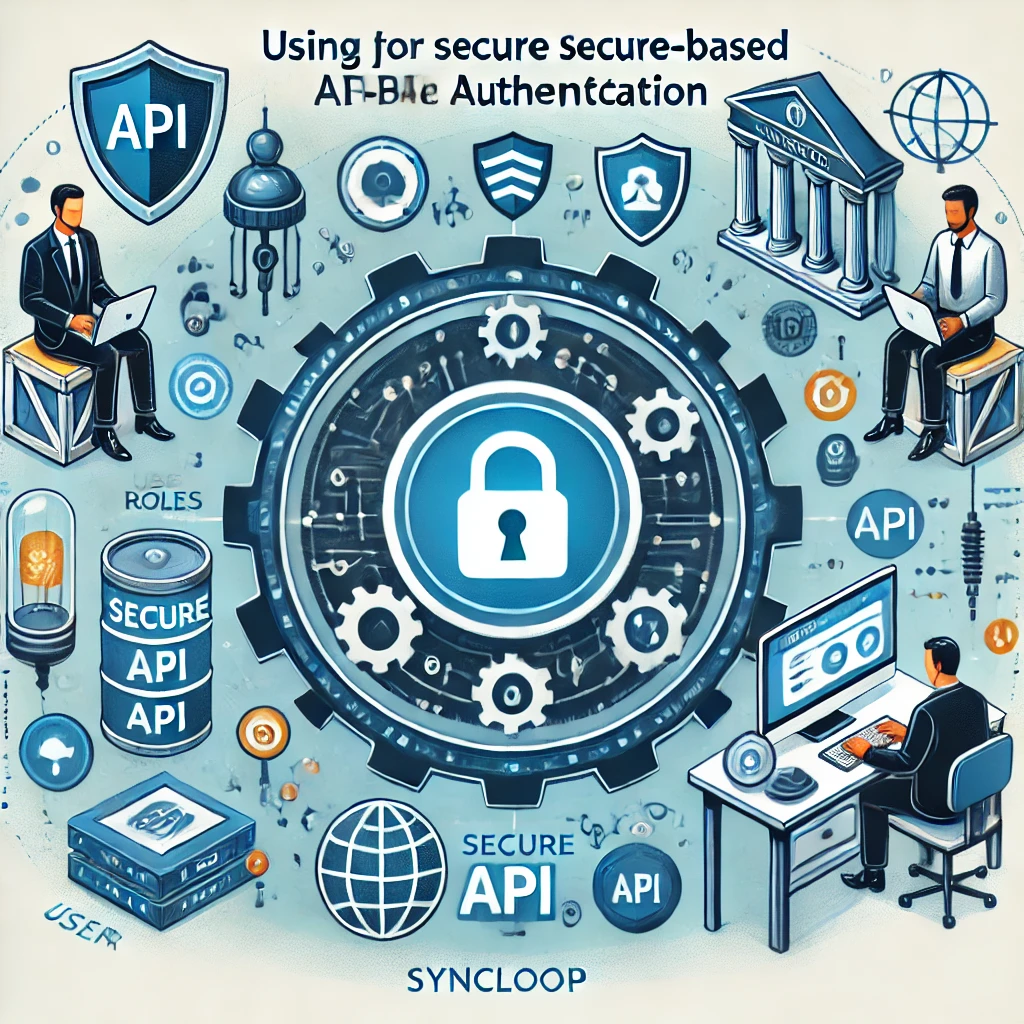Using Syncloop for Secure Role-Based API Authentication

Syncloop provides tools to streamline RBAC implementation, offering features like role mapping, dynamic access policies, and real-time monitoring. This blog explores how Syncloop enhances role-based API authentication and shares best practices for ensuring secure and scalable access control.
The Importance of Role-Based API Authentication
RBAC is essential for:
- Enhanced Security: Restricting access to sensitive data and operations based on user roles.
- Operational Efficiency: Simplifying access management for complex systems.
- Scalability: Supporting dynamic user roles and permissions in growing applications.
- Regulatory Compliance: Enforcing strict access controls to meet data protection requirements.
- Minimizing Risks: Reducing the attack surface by limiting unauthorized access.
Challenges in Role-Based API Authentication
- Dynamic Role Management Handling changes in user roles and permissions without disrupting services.
- Multi-Tenant Environments Enforcing role-based access control across tenants with isolated data and permissions.
- Token Management Ensuring secure and efficient token validation for authenticated users.
- Integration Complexity Connecting RBAC mechanisms with existing identity providers and systems.
- Monitoring and Auditing Tracking and analyzing access patterns to detect anomalies and ensure compliance.
How Syncloop Simplifies Role-Based API Authentication
Syncloop provides comprehensive tools and features to address RBAC challenges:
- Dynamic Role Mapping Assign roles and permissions dynamically based on user attributes or external systems.
- Token-Based Authentication Use secure tokens (e.g., OAuth 2.0 or JWT) to authenticate API requests.
- Role-Based Access Policies Define and enforce fine-grained access controls for specific roles and endpoints.
- Real-Time Monitoring Track authentication events and analyze access patterns in real time.
- Multi-Tenant Support Isolate roles and permissions for tenants while maintaining centralized control.
- Error Handling and Alerts Detect unauthorized access attempts and notify administrators proactively.
- Integration Tools Seamlessly integrate with identity providers like OAuth, SAML, or LDAP.
Steps to Implement Secure RBAC with Syncloop
Step 1: Define Roles and Permissions
Identify and define the roles required for your application, such as:
- Admin: Full access to all resources and operations.
- Manager: Limited access to resources within their team or department.
- User: Access to personal data and general operations.
Step 2: Configure Access Policies
Use Syncloop to:
- Define endpoint-specific permissions for each role.
- Set conditions for dynamic role assignments based on user attributes.
- Implement default policies for unauthorized access handling.
Step 3: Integrate Authentication Mechanisms
Configure Syncloop’s token-based authentication to:
- Validate tokens using standards like OAuth 2.0 or JWT.
- Associate tokens with roles and permissions dynamically.
- Enforce token expiration and refresh policies for added security.
Step 4: Automate Role Assignments
Leverage Syncloop’s automation tools to:
- Assign roles based on user attributes from external systems (e.g., Active Directory).
- Update permissions dynamically as roles or organizational policies change.
- Notify users and administrators of role changes automatically.
Step 5: Monitor and Audit Access
Enable Syncloop’s monitoring tools to:
- Track access patterns and detect anomalies in real time.
- Log all authentication and access events for auditing purposes.
- Generate reports for compliance and policy enforcement.
Step 6: Validate and Test
Simulate various scenarios to validate:
- Access control enforcement for each role.
- System behavior during unauthorized access attempts.
- Performance under high authentication loads.
Best Practices for Role-Based API Authentication
- Implement Principle of Least Privilege Assign the minimum permissions necessary for each role.
- Use Secure Tokens Protect tokens with encryption and validate them rigorously during each request.
- Monitor Continuously Use Syncloop’s monitoring tools to track and respond to suspicious access patterns.
- Enable Multi-Factor Authentication (MFA) Add an extra layer of security for roles with high access privileges.
- Document Policies Maintain clear documentation of roles, permissions, and access policies for transparency and troubleshooting.
Example Use Case: Healthcare Management System
A healthcare platform uses Syncloop to secure its API with RBAC:
- Dynamic Roles: Assign roles like "Doctor," "Nurse," and "Patient" based on user profiles.
- Access Policies: Restrict sensitive patient data access to authorized medical staff.
- Secure Tokens: Use JWTs for authentication, linked to user roles and permissions.
- Monitoring: Track access patterns to detect unauthorized attempts or unusual activity.
- Compliance: Generate audit logs to ensure compliance with HIPAA regulations.
Benefits of Using Syncloop for RBAC
- Improved Security: Enforce strict access controls to protect sensitive data.
- Enhanced Scalability: Support dynamic roles and permissions as user bases grow.
- Streamlined Management: Simplify role assignments and updates with automation tools.
- Real-Time Insights: Gain visibility into access patterns and detect anomalies proactively.
- Regulatory Compliance: Meet industry standards and data protection requirements effortlessly.
The Future of Role-Based API Authentication
As APIs continue to serve as the backbone of modern applications, RBAC will remain a critical security feature. Syncloop equips developers with the tools to design, monitor, and optimize role-based authentication workflows, ensuring secure and scalable API interactions.
Image Description
A conceptual illustration showcasing Syncloop’s role-based API authentication tools, featuring dynamic role mapping, secure tokens, and real-time monitoring. The image highlights scalable and secure access control for modern APIs.
Back to Blogs